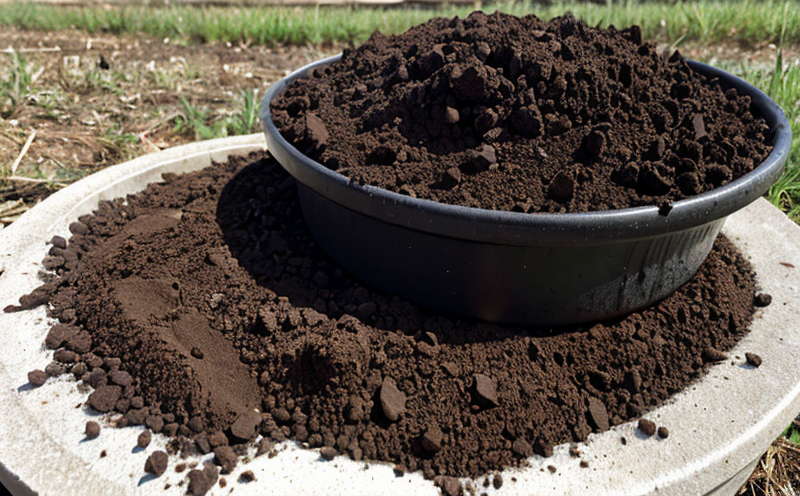ISO 5667-20 Hazardous Waste Leachate Sampling Procedures
The ISO 5667 standard series is a crucial set of guidelines designed to ensure the accurate and reliable sampling of hazardous waste leachate. This service specifically focuses on adhering to ISO 5667-20, which provides detailed procedures for the collection, preservation, and transportation of samples intended for chemical analysis.
The scope of this service is particularly relevant for entities involved in waste management, hazardous waste disposal facilities, and research institutions that work with hazardous materials. By adhering to these stringent sampling protocols, laboratories can ensure that their results are both accurate and legally compliant, thus maintaining a high level of trust within the industry.
The process begins with the proper identification and characterization of the waste stream. This involves assessing the chemical composition, physical properties, and potential hazards associated with the leachate. Once this information is gathered, it becomes possible to select the appropriate sampling equipment and techniques that will not introduce any contamination into the sample.
Sampling must be conducted under controlled conditions to prevent alterations in the chemical makeup of the waste. This includes ensuring that containers are clean and free from residues, using suitable personal protective equipment (PPE), and maintaining a sterile environment where necessary. The type of sampling device used depends on factors such as flow rate, container size, and the specific properties of the leachate.
After collection, the sample must be preserved to maintain its integrity until analysis can begin. This may involve refrigeration or the addition of preservatives depending on the nature of the waste. The sample should also be clearly labeled with all relevant identification details including date, time, and location.
The transportation phase is equally critical as it involves keeping the sample stable during transit to the laboratory for analysis. Proper packaging methods are essential to prevent any further changes in the composition or stability of the leachate. This might involve insulated containers if refrigeration is required or sealed packages designed to protect against contamination.
Upon arrival at the laboratory, rigorous quality control measures ensure that each sample meets predefined criteria before undergoing detailed analysis according to relevant standards such as ISO 5667-20 itself alongside other applicable regulations like OSHA and EPA guidelines. Compliance with these stringent requirements helps maintain consistency across different batches of samples from various sources.
The importance of accurate sampling cannot be overstated; any deviation could lead to erroneous conclusions regarding the environmental impact or treatment efficacy of hazardous waste materials. By leveraging our expertise in this field, we guarantee that every aspect of your sample collection process adheres strictly to international best practices.
- Controlled conditions during sampling
- Use of appropriate PPE
- Selection of suitable containers and preservation methods
- Rigorous quality control upon arrival at the lab
To summarize, our ISO 5667-20 Hazardous Waste Leachate Sampling Procedures service ensures that all samples are collected accurately, preserved correctly, transported securely, and analyzed reliably. This approach not only meets but exceeds regulatory expectations while providing valuable insights into the composition and behavior of hazardous waste streams.
Quality and Reliability Assurance
The quality assurance process in our ISO 5667-20 Hazardous Waste Leachate Sampling Procedures is a multi-faceted system that ensures every step from sample collection to final analysis adheres strictly to international standards. Our team employs advanced monitoring tools and techniques throughout this entire chain, guaranteeing the highest levels of precision.
Firstly, we utilize calibrated instruments for all aspects of sampling including flow meters, pH meters, conductivity probes, and more. These devices are regularly checked against traceable references to ensure accuracy and reliability. Secondly, our personnel undergo extensive training on proper sample handling techniques, ensuring they can perform tasks consistently across multiple projects.
Thirdly, we maintain a strict chain of custody documentation process which records every action taken with each sample from collection through transportation to analysis. This transparency allows us to trace any discrepancies back to their source immediately should they arise during processing or interpretation stages. Fourthly, our laboratories are equipped with state-of-the-art analytical equipment capable of detecting even minute traces of contaminants within the leachate.
Finally, we conduct regular internal audits and external reviews by independent third parties who verify that all procedures comply fully with ISO 5667-20 requirements. These continuous improvements help us stay at the forefront of scientific advancements in this field, providing reliable data for decision-making purposes.
Customer Impact and Satisfaction
Clients benefit significantly from our adherence to rigorous quality assurance protocols when performing ISO 5667-20 Hazardous Waste Leachate Sampling Procedures. These practices ensure that clients receive accurate, reliable data which is essential for making informed decisions about waste management strategies.
Accurate leachate sampling leads to better understanding of the composition and behavior of hazardous materials, enabling more effective treatment methods. This results in reduced environmental impacts associated with improper disposal or storage practices. Moreover, compliance with regulatory requirements enhances reputation among stakeholders by demonstrating commitment to ethical business practices.
In terms of customer satisfaction, we aim to exceed expectations through efficient service delivery and transparent communication channels. Our dedicated team members are always available to address queries promptly and provide detailed reports upon completion. By offering comprehensive support throughout the entire project lifecycle, we foster long-term relationships built on trust and reliability.
Use Cases and Application Examples
The ISO 5667-20 Hazardous Waste Leachate Sampling Procedures service finds application in numerous scenarios within the waste management sector. One key use case involves monitoring compliance with environmental regulations by collecting representative samples from landfills or hazardous waste treatment facilities.
Another common scenario is supporting research initiatives aimed at developing safer disposal methods for toxic chemicals. By providing precise leachate data, our service facilitates advancements in technology and policy development. Additionally, this procedure plays a vital role in assessing the effectiveness of corrective actions taken after incidents involving accidental spills or releases into waterways.
Moreover, it supports third-party audits conducted by governmental bodies responsible for enforcing environmental protection laws. Through consistent and reliable sampling practices, these organizations gain confidence that reported findings accurately reflect real-world conditions.





